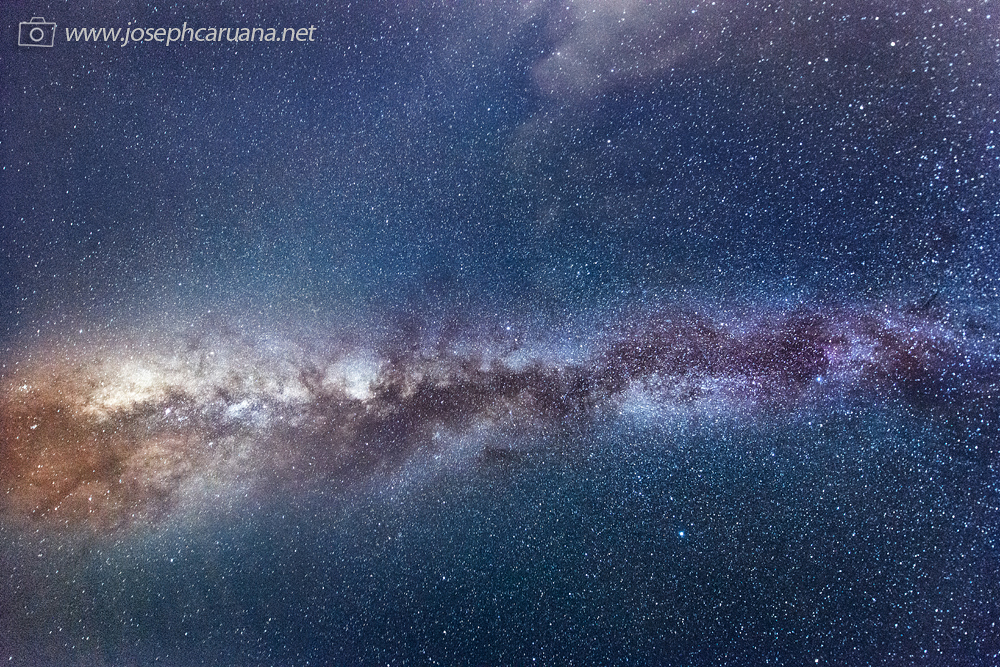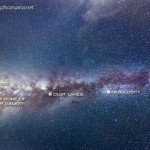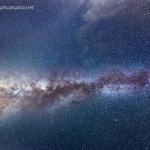A view of Home
Here goes my best attempt yet at capturing the Milky Way Galaxy from home in Gozo, Malta. It’s an image that took a couple of hours to get right in camera, and many more were spent in painstaking post-processing to reveal all the subtle detail that lay hidden within the image. It is definitely one of the pictures I am most happy with and proud of. Can’t wait to make a large print of this one! (Click here to view how the Milky Way looks from the site where I captured this image.)
Make sure you click on the zoom button and then click on the expand button. I have also posted an annotated version of the same photo. A brief description of some of the most important features of the image is given below:
Brief Description:
The Core of the Galaxy: You are looking towards the very centre of our home, the Milky Way Galaxy – our cradle in the universe. The warm colour of this region comes from the light of very old, red stars in our Galaxy. (Note the gradual change to blue away from the centre.) I should also point out that we have very strong evidence that at the very centre lies a super-massive black hole.
Star Clusters: Here and there you may notice clumps of stars. Known as open clusters, these consist of young stars loosely held together by the gravitational attraction between them as they travel around the centre of the Galaxy. Some of them are embedded in clouds of interstellar dust and gas (i.e. dust and gas which lie in the vast emptiness between the stars).
Nebulosity: Throughout the whole image you can several nebulous regions – glowing clouds of light. These are indeed clouds of gas in space; some glow by emitting light which they absorb from the stars they harbour (we call these HII regions), others reflect light from nearby stars.
Dust Lanes: These dark lanes which you can in several regions of the photo are clouds of dust which obscure the view behind them. One way of finding out what lies behind is by looking at the infrared part of the spectrum instead of the visible wavelength range.



